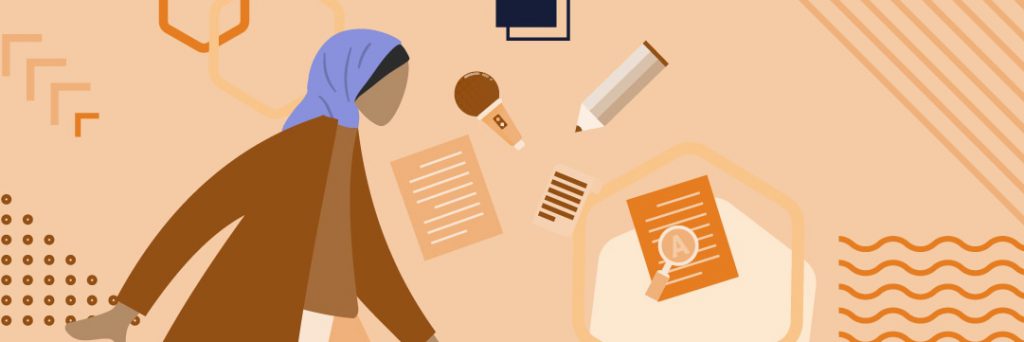How to transcribe an interview – it seems pretty easy. Most people think that transcription only involves listening and typing, which is true for the most part.
When transcribing an interview, all the incoherent sentences, coughs, sniffs, and silences will become obvious very quickly. Not to mention the painfully long hours of audio, but this shouldn’t discourage you.
Transcribing an interview is not as easy as you might think, but lawyers transcribe interviews every other day. Researchers do it, podcasts do it, and writers do it too.
Transcription is, without a doubt, a time-consuming and tedious process, but there is a lot you can do to make the process easier.
This article will show you multiple ways to transcribe an interview.
Why Transcribe Content at All?
Transcription is beneficial in many ways. Podcast owners use transcripts to generate more online business, and website owners use transcripts to rank higher on search engines.
Let’s consider the facts:
Raw interviews are usually long.
If a listener is looking for something specific, they wouldn’t know where to begin. Audio files are restricting because they don’t allow listeners to quickly analyze content or make instant connections between the different parts of the interview.
With a written version of the interview, you know exactly what you are dealing with.
Audio files are restricting because they don’t allow listeners to quickly analyze content or make instant connections between the different parts of the interview.
It’s Easier to Analyze Written Content
Transcripts help you tell whether the data you have is enough, or if you need to conduct more interviews.
You can easily highlight the most important elements of the interview, and even include a table of contents for easy navigation.
Written transcripts allow you to make the most of your audio file. You can easily categorize and analyze your interview content once it is transcribed.
You can analyze your transcript in the following ways:
Cite any sources correctly
Don’t commit the fatal mistake of plagiarism.
If any of the speakers made a reference to outside sources, you need to correctly cite the source.
You can also improve the SEO position of your content by linking relevant keywords.
Transcribing your content will improve its SEO because search engines are unable to crawl video or audio. Transcripts allow your website to rank better and for more keywords. It also allows potential listeners to find your content easily.
Text copy uses much less storage space than audio files. You can also print out a transcript as a document, allowing for easier and faster sharing of information.
You can Link to Social Media
According to Statists, the number of active social media users is expected to climb to 3.09 billion in 2021. This is a whole new market that you can corner, and all you need to do is transcribe your interviews and share them on social media.
Transcripts are helpful for people who are hard of hearing.
They can also be used as future references in the case of educational content. For TV interviews, transcripts allow viewers maximum visibility of the information being shared.
Dangers of Transcription
Changing the medium of expression from verbal to textual presents a few problems, the main one being:
Some Things Might Get Lost in Transcription
Some transcription methods focus on eliminating as many hesitations and stutters as possible. This improves readability, sure, but it may also remove the context from the interview.
There is no way to communicate the original intonation or mood of the interview.
When you get rid of things like laughter and incoherent sentences, it also takes away some of the personality that can be heard in the speaker’s voice.
What is Your Preferred Transcription Method?
What is the goal of your transcription project? Are you only interested in the facts? Or do you need to transcribe every word?
There are different types of transcription methods, and the one you choose depends on your audience and the goal of your project.
True Verbatim Transcription
Using this transcription style means writing down every single word, including the stutters and pauses.
True verbatim takes longer and costs more because every word is transcribed.
When to use it
Sentence context varies depending on the parties involved and their relationship. Verbatim transcription is important because apart from showing what was said, it also shows how it was said.
This transcription style is best for research and legal content.
Intelligent Verbatim Transcription
The intelligent verbatim method gets rid of any irrelevant fillers, grammar mistakes, and shortens long paragraphs.
It’s much easier to read interview transcripts without broken sentences, which is why this is the most common transcription method.
An intelligent verbatim transcript can be further summarized. In this case, the transcriber can remove sentences that don’t add any meaning to the interview.
Intelligent verbatim transcription gives the transcriber freedom to make subjective decisions about what is important and what isn’t.
When to use it.
The way you speak is not the way you write.
Text sounds different from speech, which is why the intelligent verbatim transcription method exists – to make transcripts more readable.
Con
Although this transcription method improves readability, it sacrifices some parts of the interview (like pauses and hesitations) that could have had an emotional impact on the audience.

Essentials of Interview Transcription
When learning how to transcribe an interview, ask yourself the following questions:
- How many speakers are there?
- What is the content of the interview?
- Do the speakers have distinct accents?
- What is the tempo of the interview?
All these questions will help you to correctly transcribe and format your interview. You also need to include the following so as to give the transcript some context:
- Names of the Interviewer and the Interviewee
These can be anonymous or abbreviations of the speakers’ actual names.
- Date and time
- Interview location
- Length of the interview
- Line numbers and time stamps
Provide a Translation
While an interview is recorded in one language, it is possible to transcribe the content in multiple languages.
But why should you bother doing this?
Well, because English speaking people only make up a quarter of the world’s population. Translating your interview transcript is a sure way to reach the wider market, and depending on your audience, this might be a necessity rather than a choice.
You can share your interview transcripts as blog posts, PDFs, e-books, articles, or even case studies. There is no limit to what you can achieve with transcription.
Translation vs Transcription vs Interpretation.
Choose the Right Transcription Software
It takes a long time to write a good transcript, especially when you are dealing with long hours of audio.
The solution? Let a transcription software do the heavy lifting for you, but this doesn’t come without its pros and cons.
Most transcription software has intuitive editors that accept different audio formats such as MP3 and MP4.
Consider the Accuracy
When choosing transcription software, go for the most accurate one. And if it’s free to use, then you landed a jackpot.
However, for a transcription software to do its job, you need to meet the following conditions:
- Record the interview with good equipment
- Use a noise-free background
- Reduce the amount of over-talk
- Generally, have a good audio quality
If you don’t meet the following conditions, a lot of software will fail to correctly write down your interview transcript.
Transcription Software Examples
You can choose from a variety of transcription software depending on your budget. Here are some examples of top transcription software in the industry:
- Transcribe
- Express Scribe
- Inqscribe
With transcription, one thing matters more than all the rest: accuracy.
Maybe you have a lot to do, or you don’t have the budget to outsource your project. Perhaps you are just looking for the easiest and fastest way to complete the project. Either way, transcription software is the answer.
After you get your software generated transcript, try to review and revise it for any mistakes.
Transcription software often make mistakes and therefore still need the human touch.
Does it matter if the interview is not in English?
Yes, it does matter if the interview is in another language apart from English.
Why?
Because a lot of transcription software only support English.
So what do you do if you have to quickly transcribe an interview in a language other than English?
Well, nothing beats the speed of transcription software, but there are a few hacks that can get you close:
Voice-typing
Voice-typing has saved many writers and transcription experts from late submissions. Google Doc has an in-built voice-typing tool you can use.
Simply turn on your microphone, select your preferred language, play the original audio file in your headphones, and repeat it out loud.
For obvious reasons, voice-typing won’t be as fast as using transcription software.
A one-hour interview will take at least an hour to transcribe, and don’t forget you have to put in the time stamps and speaker names yourself.
You will also have to proof the content for accuracy.
The average human being speaks 7 times faster than they write, and 4 times faster than they type.
Taking all the factors in perspective, it will take you about 4 to 6 hours to transcribe an interview of one hour.
Voice-typing is a last resort solution because not every language is supported.
If the transcription software is not for you, there is another option:
Manually Transcribing an Interview
You can do it yourself or outsource the work to a trusted professional transcriber.
Worried about outsourcing? We have a guide that will answer all your questions and calm your fears about hiring transcription freelancers:
Top Tips to Outsource Creative Projects.
When manually transcribing content, keep the following in mind:
- Use headphones for clearer audio
- Use the provided client brief (does it call for verbatim or intelligent verbatim transcription)?
Can You Change the Audio Content in a Transcript?
The basic rule of transcript is to write what you hear, but this rule can be broken in certain instances:
- To clarify any unclear sentences.
- Emphasizing certain words.
- Indicating missing audio.
Final Thoughts
When transcribing an interview, you have three options. Either do it yourself, hire an expert transcriber, or use transcription software.
Whatever method you choose, remember to proof your content after you are done.
Once you have these basic guidelines in mind, it becomes easier to transcribe interviews (or any other audio files for that matter).
Ultimately, how you transcribe your interview will depend on the following factors:
- The complexity of the audio
- Your budget
- Access to transcription software and equipment
- Your timeline
If you need help, don’t hesitate to reach out to the transcribing professionals on Bunny Studio.










